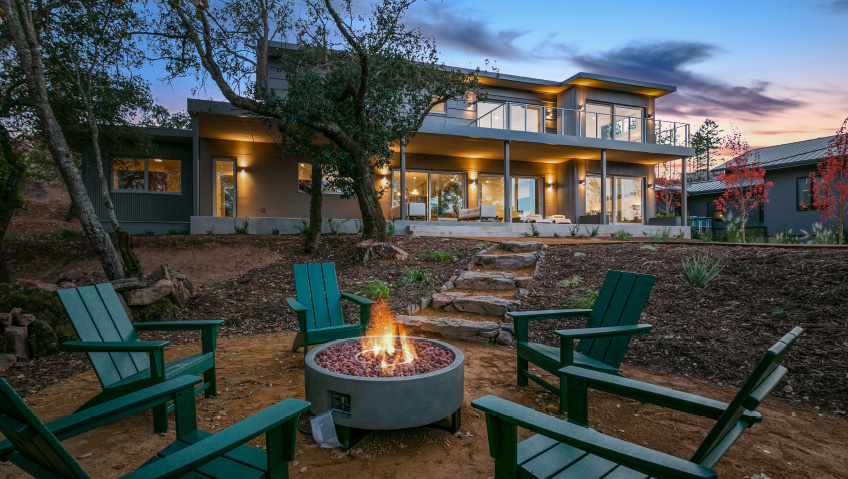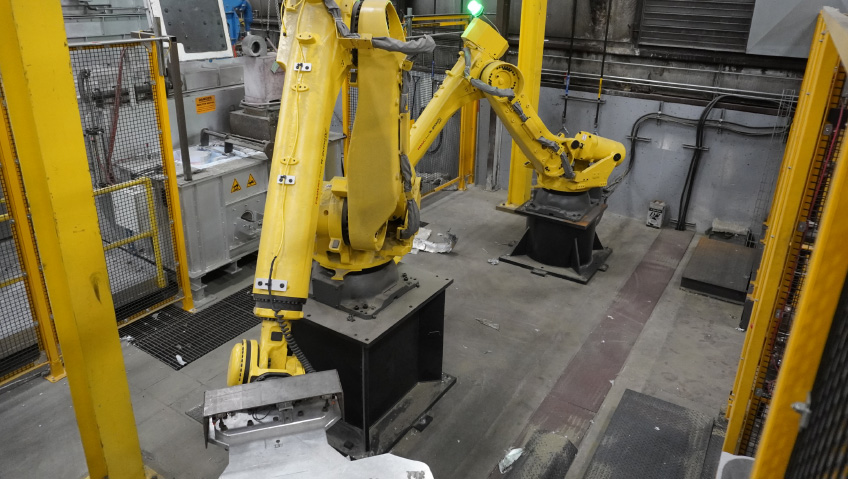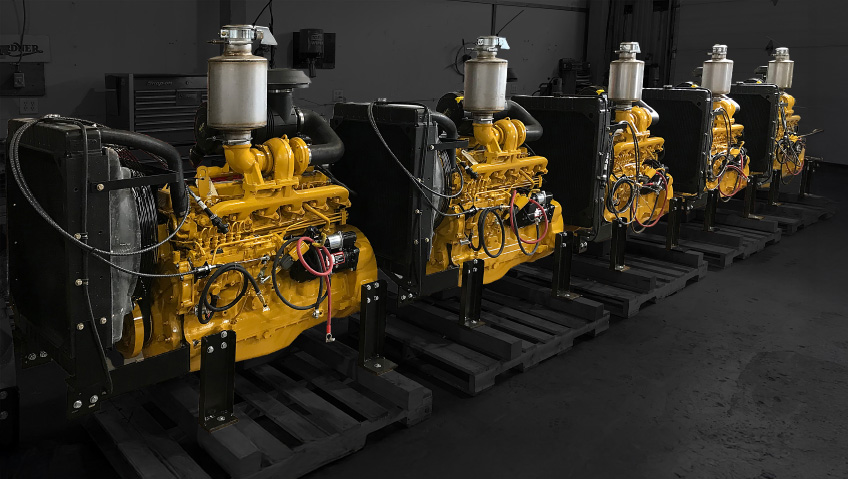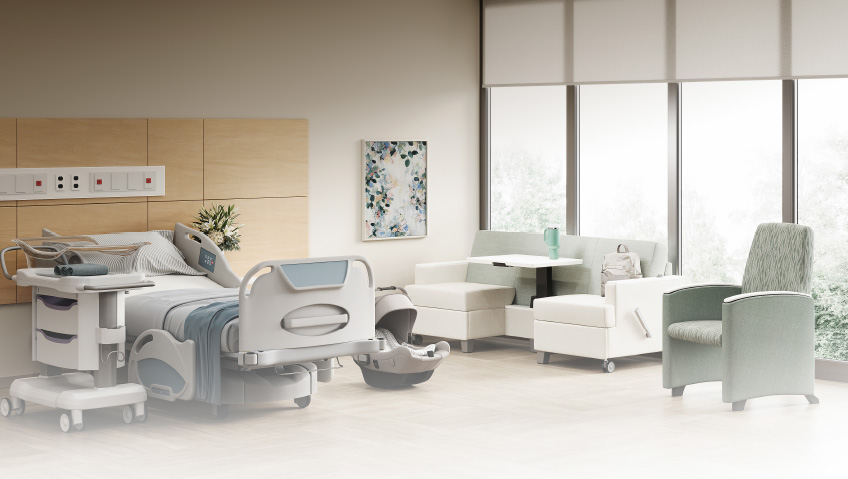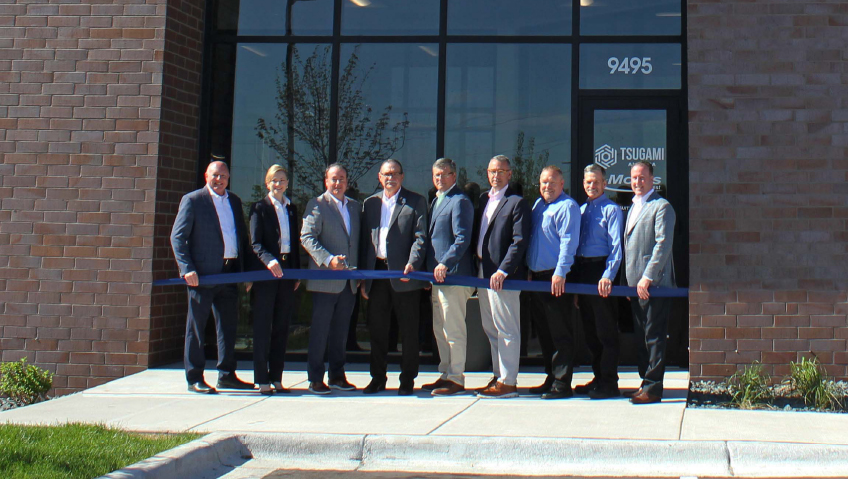Formed through a collaboration of knowledge, values, talent, and the desire to create healthy homes for healthy futures, Dvele’s innovative style and design disrupt decades of traditional home building to create the smartest, healthiest, most sustainable homes on the market.
Dvele—”dwell” in Norwegian—was established in 2018 with the conviction that “home” is not only the foundation of a healthy society but that improving houses can also improve children’s futures. Determined to uphold a Scandinavian belief that spending more time in nature is good for our health, Dvele studies the science of homes, healthy living, and energy independence to address pressing issues in the housing sector and the natural environment. The company combines building material science and technology to create reasonably priced, less wasteful, self-sustaining homes.
“We work closely with suppliers and vendors such as The Federal Savings Bank, our preferred lending partner, to help position us in the marketplace to offer the best product possible,” says Kellan Hannah, Director of Growth and Marketing Strategies.
“Energy efficiency and the health of the home—the sustainability—was always important from day one, and it still is today,” says Hannah. “Like with most new products and new companies, the trouble is that a lot of these things don’t usually exist, or if they do, they’re enormously expensive. Very few people manufacture some of the products we wanted five or six years ago.”
It’s been a constant evolution, he says, adding the company is in its fourth version of its homes right now, and will never stop aiming to improve.
“It will always be a global, standardized approach to all of our homes, because we want to raise the bar on what the requirements are for homes and what each home should do,” Hannah says. “We’re always going to bring the same level quality of technology, sustainable materials, and energy efficiency to every home.”
Getting away from lumber in the houses’ framing was Dvele’s first priority. Because it’s predictable—and usually affordable—99 percent of builders use lumber to build on site.
“The first thing we did is move to recycled-gauge steel which in itself gives us a number of structural advantages that help protect the home from climate and environmental emergencies such as hurricanes,” Hannah says.
Dvele homes are Category 5 hurricane-rated, earthquake-rated and approved beyond the typical standard. Most earthquake-proof homes or buildings will not stand forever—they simply won’t fall down within the first hour after the earthquake, allowing residents to go back in and retrieve items. Dvele homes, however, will most likely remain standing due to their steel construction.
Another huge advantage of metal is the absence of pests and mildew, which is greatly beneficial to health and keeping people safe. “A lot of people’s asthma and respiratory issues come from the mold and mildew on the lumber of the home and the pests that eat it and leave behind waste,” Hannah says.
Other innovations include greater energy efficiency, moving into a new phase of manufacturing its own healthy materials and components, and integrating energy independence.
With the world facing multiple crises in housing availability and affordability, energy security, health issues, and a changing weather system, Dvele’s Self-Powered™, Self-Healing™ homes achieve an extremely high level of reduction of chemicals in the atmosphere. This is achieved by way of the custom-designed building envelope that prevents thermal bridging—heating and cooling gain or loss. The Self-Powered™ system provides clean energy production and storage along with continuous air circulation, reducing the draw on heating and cooling, and leads to a Dvele home being 84 percent more energy-efficient than a conventional home.
“It creates a self-sustaining, net-positive home that goes beyond meeting the daily or monthly needs of what most people use their homes for, and in fact can share energy with the grid to create micro-grids,” Hannah explains.
And potential clients are seeking the company out more regularly as they look to not only lower their own living costs, but help the environment as well. “There’s a big increase even in the resale market for green, energy-efficient, sustainable homes,” he says. “Sometimes they’re even selling for 20 percent higher than a normal home, so it’s becoming very favorable to people who want to live in a home for a long time.”
To keep the homes efficient and affordable, Dvele employs the use of cutting-edge automation. Much of what happens in home manufacturing is repetitive and can instead be processed via automation—not with the goal of removing people completely from the manufacturing, but to instead put experts where they will be better used.
To that end, the company now prints its own steel, which is then folded into beams and trusses for floors, walls, and ceilings, and punches out holes for conduit, plumbing, and electricity. The next phase sees all the metal components fitted together with robots on an assembly line and placed on a canvas, along with exterior and interior layers going to the home—essentially standardized, repeatable wall, floor, and ceiling assemblies.
This efficiency has all greatly sped up the entire process. While building a new conventional home can take from 18 months to two years, Dvele can now manufacture the entire home, to 95 percent complete, in just 12 weeks.
“When we put the modules together, it’s just a matter of connecting them,” Hannah says. “Once we’re fully automated and fully set up in our new factory in Montana—which will even include millwork for doors, molding, trim, and cabinets—we’ll be able to produce an entire home in five days.”
This could result in creating 2,000 modules a year conservatively, an amazing feat.
“We say modules because if you get a tiny home or an ADU (accessory dwelling unit) for your backyard, that’s one home, that’s one module,” Hannah says. “But if you build a 3000-square-foot home, that [might take] five or six modules. So on the low end, 2,000 modules a year, and on the high end, it could be upwards of about 6,000.”
The company has also begun selling DTC—Direct to Consumer—and to make a bigger impact and truly make a dent in the housing crisis, it needs to be done at scale. This means working with developers, which does have some drawbacks such as expanding and creating more suburbs and the resulting impacts in those areas.
“We’re already mitigating that by changing concrete foundations to using our light-gauge steel, so we’re significantly offsetting the amount of carbon that would have gone into the intense developing processes, and it’s growth to help more people,” says Hannah.
The Dvele team is experiencing a huge influx of developers approaching them, with about $250 million generated in the sales pipeline since the Montana launch. In response, the company has plans to have about 10 foundries running at full capacity within the next decade.
“When we speak about developers, we’re not just speaking about new, fresh land being developed on the edges of cities; we’re actually creating triplex and multiplex models that will be built within the city where there are old properties and buildings that need to be torn down and rebuilt. We can do that.”
The company is also working closely with an enterprise level of developers, typically hospitals, educational institutions, and other large manufacturers or companies with a large employee base. Instead of having people commute across town, a lot of these campuses have land that’s ready for development.
“We’re creating some really unique opportunities with hospitals and universities and other large tech companies, developing mini-home communities within their campuses to help provide their employees with affordable housing,” says Hannah. By doing this, they’re creating an asset and helping the environment, he adds. It’s a whole package of health and financial security wrapped up into what companies are already doing to attract and remunerate employees.
“It helps average, hard-working Americans,” says Hannah. “A lot of people that make up the population of people working and in homes are typically working in these types of institutions, so instead of making a commute across town or from outside of town, we thought, ‘why not have these little mini communities set up within them?’”
With homes operating at full capacity from the day buyers move in—solar panels producing clean energy for immediate use or recharge when needed, purified airflow and water, and exceeding the Passive House airtight standard—it’s difficult to fathom why this type of building won’t be the way of the future. Not only are these homes more efficient, they’re also designed to be more conducive to spending time together, lingering at home and having everything you need.
“We’re finding more and more people are okay with the size of homes we’re offering,” Hannah says. “It’s very rare that we get someone who wants a 6 to 10,000-square-foot home. I think a lot of people are learning that what was once luxury—space—is now having a climate-resilient home of self-power with barely any maintenance. Those now are seen as the cutting-edge, ‘luxury’ items that Dvele just produces as a standard.”
Just because homes have been always produced one way doesn’t mean they can’t be done differently, he believes. “We have to educate people on how there is another way to manufacture homes.”
In fact, Dvele is actively pursuing raising the standard of all homes with the U.S. government through the Housing and Urban Development (HUD) authority. Just as all cars have seatbelts and safety features, healthy homes can also help protect people living within them. Additionally, raising the standard of all homes being produced will result in efficiencies and innovations that will not only allow more builders to do it, but will drastically lower the cost of all homes.
“Once we’re fully online with our innovations in robotics, we could see 30, 40 and 50 percent cheaper homes. If more people were doing that, more people would be able to take advantage and have these technologies, and we’d actually be able to fix the housing crisis,” Hannah says. “We could spend $50,000 on a home and be very happy.”
With 42 percent of global emissions resulting directly from the home construction industry, Dvele’s processes aim to not only drastically lower the carbon impact on the environment, but to create long-lasting, sustainable dwellings filled with environmentally friendly building materials that are recycled or sustainably sourced, with no VOCs and no off-gassing.
“Part of our main value is that we always want to be creating a healthy home that’s good for people, good for the environment, and something that raises the standard of quality for people.”

